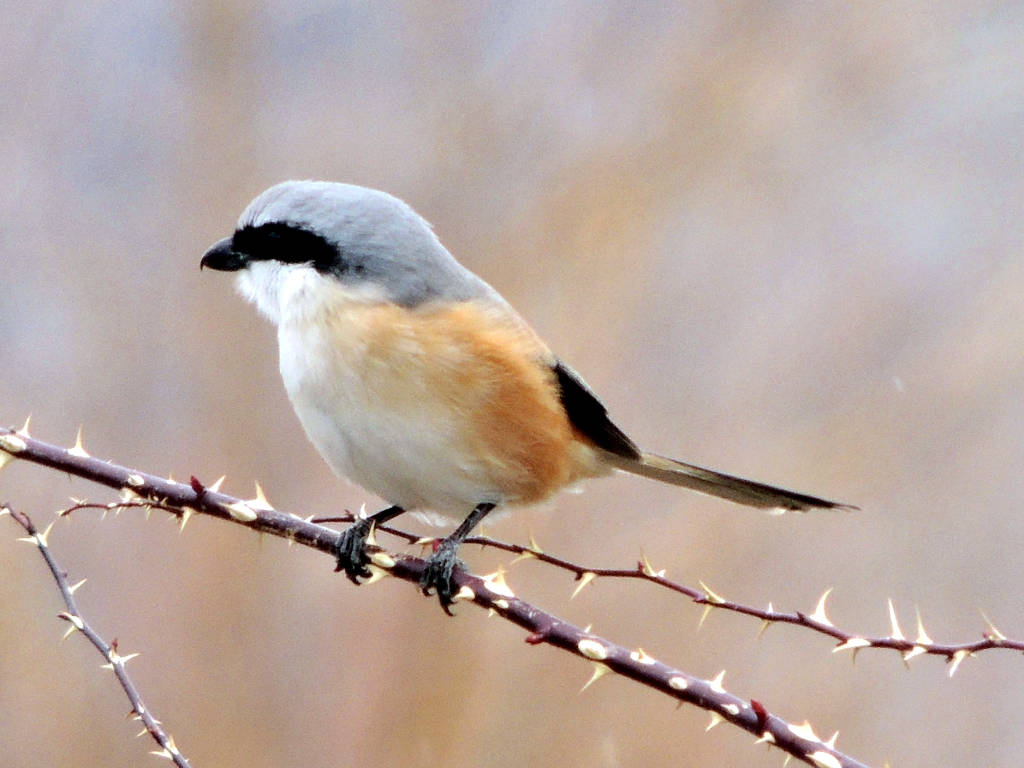
Lanius tephronotus (Grey backed shrike)
The Grey-backed Shrike (Lanius tephronotus) is a striking predatory songbird commonly found in the higher altitudes of the Great Himalayan National Park (GHNP). Its bold behavior, hooked beak, and keen hunting skills make it one of the more fascinating species to observe in the wild. In GHNP, this bird thrives in open forest edges, alpine meadows, and shrubby areas above 2,500 meters.
Appearance and Identification
The Grey-backed Shrike is medium-sized with a robust build. It features a characteristic grey back, black mask through the eyes, white underparts, and rufous flanks. This striking coloration helps differentiate it from other shrikes. With its upright perching posture and scanning movements, it’s easily spotted atop shrubs, fences, or rocks.
Behavior and Diet
As a member of the shrike family, this bird exhibits interesting predatory behavior. The Grey-backed Shrike is known for impaling its prey—typically insects, lizards, and small vertebrates—on thorns or sharp twigs to consume later. This behavior has earned shrikes the nickname “butcher birds.”
Despite its small size, it’s a bold and territorial species. Males are particularly vocal during the breeding season, delivering loud calls to defend their territory.
Habitat and Distribution in GHNP
In GHNP, the Grey-backed Shrike is most commonly sighted in alpine scrub zones and grassy clearings, especially in the summer months when it migrates to higher elevations. The bird uses scattered bushes and rock outcrops for both hunting perches and nest placement. Its presence in GHNP is an indicator of the park’s healthy high-altitude ecosystem.
| Common name | Grey backed Shrike |
| Scientific name | Lanius tephronotus |
| Family | Laniidae |
| Description | Shrikes are noisy birds with black face-masks and hook-tipped bills. It has dark grey upperparts; usually lacks white primary patch. Juvenile has cold grey base colour to upperparts. It is commonly found in an altitude of 2700-3600m and migrates below 2000m in winter. It prefers open bushy vegetation for their living. |
Conservation and Significance
Currently listed as a species of Least Concern, the Grey-backed Shrike benefits from the protected status of GHNP. Conservation of high-altitude scrublands and meadow habitats is essential to ensure the continued success of this species. As a predator of pests and insects, the shrike also contributes to ecological balance in these remote areas.
Conclusion
The Grey-backed Shrike (Lanius tephronotus) is more than a visually striking bird—it plays a vital role in the food web of the Great Himalayan National Park. Its presence underscores the ecological richness of GHNP’s upper reaches, offering nature lovers an exciting glimpse into the complex avian life of the Himalayas.



